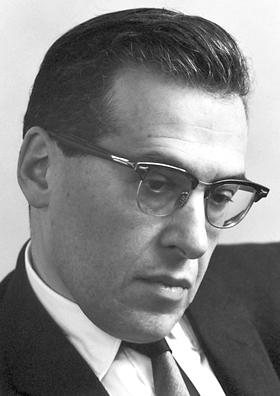16 Dec Einstein Rejects Quantum Field Theory
Einstein rejects QFT. Despite his search for a unified field theory, Einstein rejected Quantum Field Theory after asking a friend, Valentin Bargmann, to give him a private tutorial on the subject. This is not surprising; at the time Quantum Field Theory was neither complete nor successful, nor was Bargmann its best spokesman. We must also consider Einstein’s great mistrust of the QM theory that preceded Quantum Field Theory – a mistrust based on its probabilistic nature. (In QM one can never say where a particle is, only that it has a certain probability of being here or there.) This randomness was repugnant to Einstein and led to his famous comment, “I cannot believe that God plays dice with the universe.” As his friend and biographer, Abraham Pais, wrote:
I know from experience how difficult it was to discuss quantum field theory with him. He did not believe that nonrelativistic quantum mechanics provided a secure enough basis for relativistic generalizations. Relativistic quantum field theory was repugnant to him… and he did not believe in any of its consequences. – A. Pais (P1982, p. 463)
What if? I can’t help but wonder what might have happened if Einstein had waited a bit longer for his tutorial and chosen a different tutor – perhaps Julian Schwinger:
 The year is 1954, the year Schwinger published the final installment of his “Theory of Quantized Fields” papers. The 36-year-old Schwinger comes to Princeton to meet the 75-year-old Einstein, who is to die the next year. “Prof. Einstein,” he begins, in his calm but self-assured manner, “I want to show you a theory that unites all the known forces, as well as matter, into a field theory that incorporates both the principle of relativity as you have formulated it and the quantum principle that you helped introduce. It is a theory that is philosophically satisfying and, more importantly, has produced agreement with experiment to an undreamed of precision.” “Well, go ahead, then,” says Einstein, and Schwinger proceeds to expound his theory in Einstein’s Princeton study.
The year is 1954, the year Schwinger published the final installment of his “Theory of Quantized Fields” papers. The 36-year-old Schwinger comes to Princeton to meet the 75-year-old Einstein, who is to die the next year. “Prof. Einstein,” he begins, in his calm but self-assured manner, “I want to show you a theory that unites all the known forces, as well as matter, into a field theory that incorporates both the principle of relativity as you have formulated it and the quantum principle that you helped introduce. It is a theory that is philosophically satisfying and, more importantly, has produced agreement with experiment to an undreamed of precision.” “Well, go ahead, then,” says Einstein, and Schwinger proceeds to expound his theory in Einstein’s Princeton study.
The sessions are intensive and last many weeks, with Einstein asking many probing questions along the way. Finally Einstein says, “This is indeed a beautiful theory, but it seems there are six separate fields – four force fields and two matter fields. As you know, my hope was to find a single field that comprises all forces and matter. This theory of yours does not meet that objective.” “True,” says Schwinger, “but may I remind you what your friend Pauli once said: ‘What God hath put asunder, let no man join together.’ If the God you often refer to chose to have six fields, it is not for us to second guess Him. Yes, there are six different fields, each with its own properties and equations, but this is the way the universe is made. As Pauli also said to you, it is not for us to tell God what to do.”
“All right,” says Einstein, “I can accept the six fields, but there is a further problem that is more troubling to me, and that is the probabilistic nature of your theory. I have never been able to believe that God would play dice with the world.” “I understand,” says Schwinger, “and I admit that QFT has not solved the causality problem. But at least it has localized the probability aspect to a single event called field collapse – an event that is not covered by the equations of QFT. That is to say (Schwinger’s favorite expression), QFT itself is causal, but it only takes us so far. At some point a discontinuous event takes place that is not covered by the theory. It is possible that at some time a theory will be developed for field collapse and it may turn out to be causal after all. On the other hand, it may be that it is a truly probabilistic process, and perhaps God does play dice with the world. Either way, it doesn’t detract from what QFT has accomplished.”
Einstein gives in. He is captivated by Schwinger’s elegance and the soundness, both conceptual and mathematical, of his theory. He recognizes that QFT meets his desires for a field theory without “putting together what God hath torn asunder”. He appreciates the explanation that Quantum Field Theory provides for his two theories of relativity. He then announces to the world that QFT is the theory he has been looking for all his life. Of course this turns the tide and Quantum Field Theory becomes accepted throughout the physics and public communities, restoring the popular appreciation and understanding of science that once existed in the time of Newton and Maxwell.
But that didn’t happen.
Posted By: Rodney Brooks

Sorry, the comment form is closed at this time.